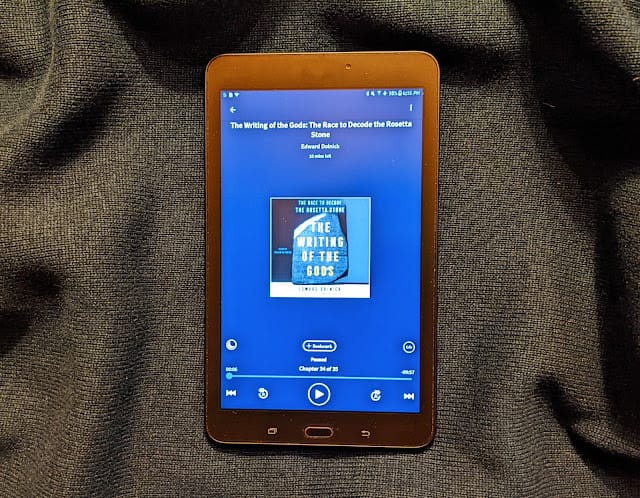
It’s difficult for us today to grasp how long the culture we refer to as “Ancient Egypt” lasted. Consider the hieroglyphs – they served Egyptians as writing for millennia. The Narmer Palatte, an intricately carved piece of siltstone and one of the oldest known examples of hieroglyphs, dates from 3100 BC. The Rosetta Stone, the subject of Edward Dolnick’s The Writing of the Gods, was created in 196 BC. Almost thirty centuries separate these two examples of Ancient Egyptian culture.
In our modern world we seek out the new, the improved, the cutting edge. Art, for example, has progressed through many Schools, and what is considered Art today is constantly evolving. Banksy’s works have little in common with cubist paintings considered cutting edge just over a century ago.
In Ancient Egypt, on the other hand, Art served the State, and its symbols and metaphors persisted for not just one century but many. Dolnick tells of a depiction of a Pharaoh, who grabs his enemy by the hair while raising his other hand to strike him. The same image recurs in drawings a thousand years apart. For the Egyptian what was old was true and proven, and not to be improved upon.
Egypt fell to Rome in 30 BC. With the rise of Christianity, Egyptian hieroglyphic writing was formally banned in 400 BC as a way to force Egypt to break from its “pagan” past. Understanding of Egyptian hieroglyphs gradually fell away. Hieroglyphs were unable to be read or interpreted for many centuries. The discovery of the Rosetta Stone in 1799 changed that. The Stone is inscribed with the same story told in two known languages. A third section of the Stone includes hieroglyphs assumed to tell the same story. After over a thousand years, the Stone offered a way to break the centuries of hieroglyphic silence.
Dolnick tells the story of the race between the British scientist Thomas Young and the French scholar Jean-François Champollion to be the first to “break the code” of hieroglyphic writing using the Rosetta Stone as the key. It took over 20 years.
In Dolnick’s telling, Young’s contribution was in identifying key clues to reading known names, without himself actually being able to read them. Champollion’s insight was that Coptic, a language not well known in the West, but that he had studied, was related to the language of Ancient Egypt in the same way that modern Italian derives from Latin. It was this insight, along with his persistence, that allowed him to go further than Young. Coptic served as a bridge, allowing Champollion to identify sounds within known names and thus identify the hieroglyphs that represented those sounds. Champollion was eventually able to read the hieroglyphs of the Rosetta Stone, and other Egyptian texts as well.
Beyond the main story Dolnick also gives us additional insights on Egypt and language. He includes chapters on the history and culture of Egypt; the history of writing; Napoleon’s conquest of Egypt; Britain’s seizing of the Stone from the French; the Nazi Enigma machine, and more. Along the way we learn lots of interesting tidbits, including that our modern alphabet is the descendant of the Egyptian hieroglyphs.
Altogether this is a fascinating look at the Rosetta Stone and written language itself. I give The Writing of the Gods Four Stars .
Buy this book: Amazon* | Barnes & Noble | Books-A-Million* | AbeBooks* | Powells | ThriftBooks
Support Indie Bookstores: Buy this book directly from Bookshop.org* or find an Independent Bookstore near you*.
Visit my Bookshop.org shop to see all my reviewed books.